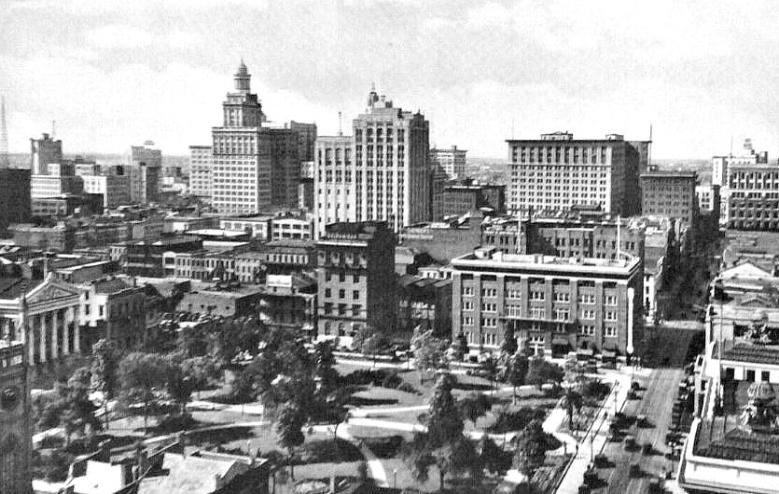
| Lafayette Square |
(Photo and description from 1930) In the Heart of Modern New Orleans: The white porticoed building on the left is the City Hall, across Lafayette Square from the U.S. Post Office, on the right. On the corner diagonally across from the Post Office is the Times Picayune building, and a little farther to the left and rear are the offices of the Item and the Tribune. The tallest structure is the Hibernia Bank building. Many things have changed since 1930. The Square is now surrounded by the Hale Boggs Federal Building/U.S. Courthouse, The F. Edward Hebert Federal Building/Post Office, the U.S. Court of Appeals, the Federal Reserve and the Pan American Life Center. Gallier Hall remains, along with a few other buildings from times gone by, but the newspapers are no more. And Hibernia Bank, the tallest building in the photo above, is easily lost among the many skyscrapers looming over it today. But, even with the changes that surround it, 230 years after it was conceived, the Square remains a beautiful and peaceful oasis in the heart of the bustling Central Business District. |

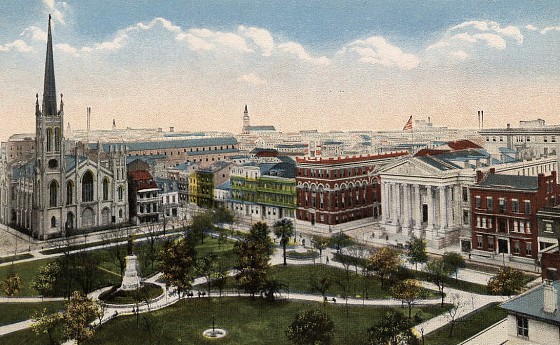
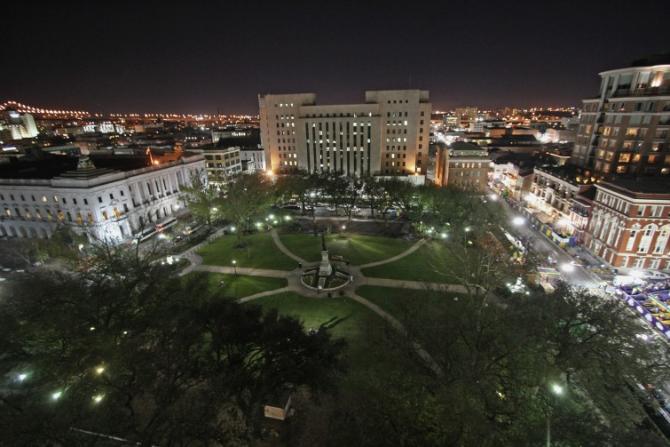
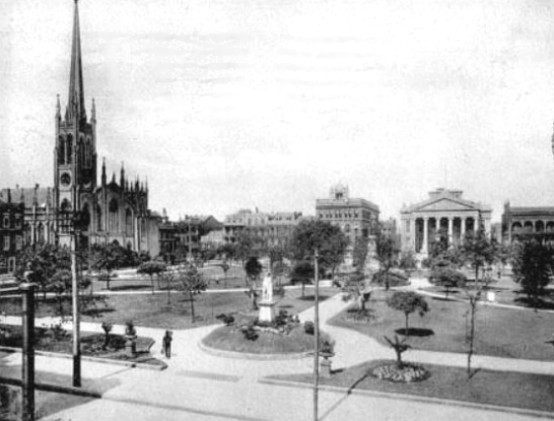
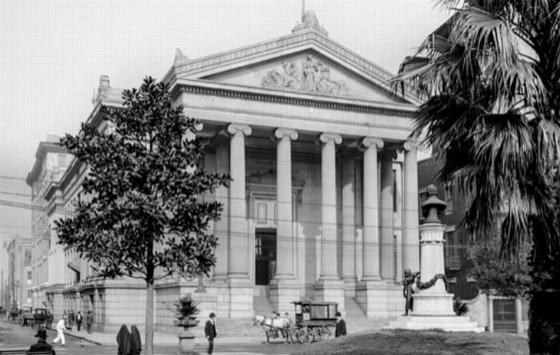
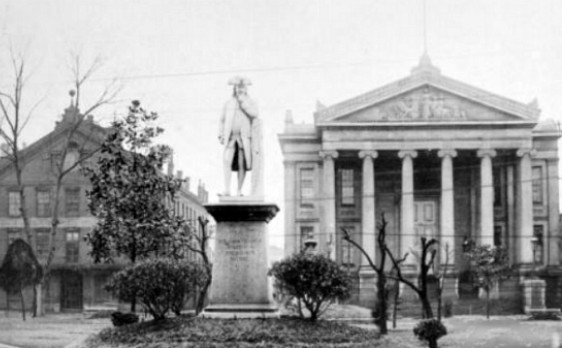
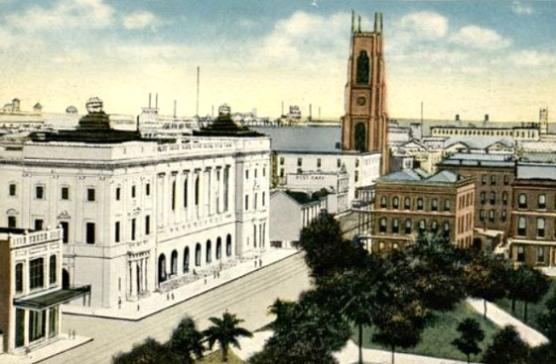
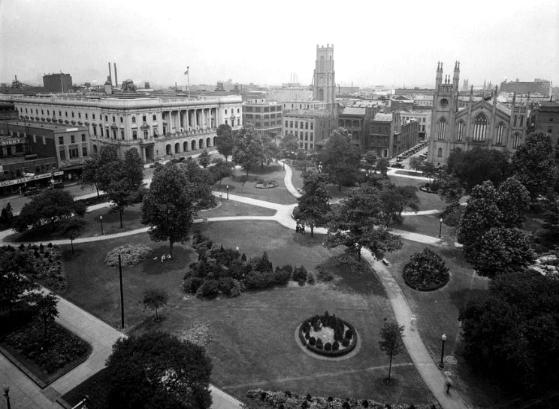
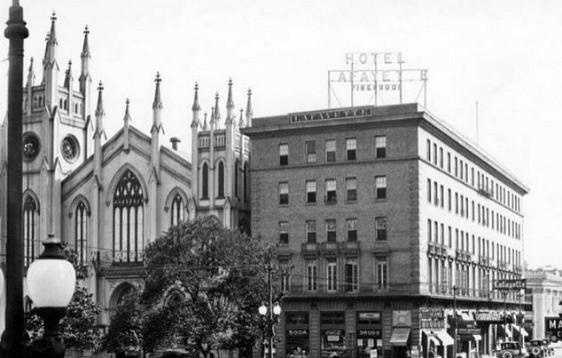
| Lafayette Square is New Orleans' second oldest park. It was designed in 1788 and named in honor of French aristocrat and Revolutionary War hero, Gilbert du Motier, Marquis de Lafayette. Hurricane Katrina damaged the trees in the park in 2005, and debris from nearby buildings made the park unsafe. A group of neighborhood residents and downtown workers formed the Lafayette Square Conservancy and transformed it into the premier urban space it is today. |
| Gallier Hall, facing Lafayette Square, served as New Orleans' city hall from the 1850's to the 1950's. It now serves as a reception hall for civic events and is home to the Ty Tracy Theatre. It's been designated as a National Historic Landmark. Photo between 1900-1915. |
| Construction completed in 1915, the building to the left was orignally a U.S. Post Office and Courthouse, it's now the John Minor Wisdom U.S. Court of Appeals. In the early 1960's, the Post Office and Court vacated the building. In 1971, the beautiful old building underwent an extensive restoration. When it was completed, the 5th Circuit Court of Appeals returned to the building as it's only tenant. |
| Gallier Hall and Benjamin Franklin statue, probably late 1800's. |
| Lafayette Park, 1938. The church in the distance is St. Patrick's on Camp Street. |
| On the left, the impressive First Presbyterian Church, constructed in 1857; it was destroyed by the great hurricane of 1915 and immediately re-built, omitting the upper portion of the spire. In 1938, the federal government purchased and demolished the church to make room for a new federal office building. |
| Date of this image is unknown, but it was sometime before 1915, as the church still has its steeple. The building on your left, across the side street, of Gallier Hall is Soule Business College. Most of the landscape around the square has changed, but, although no longer a business college, the Soule building remains. |
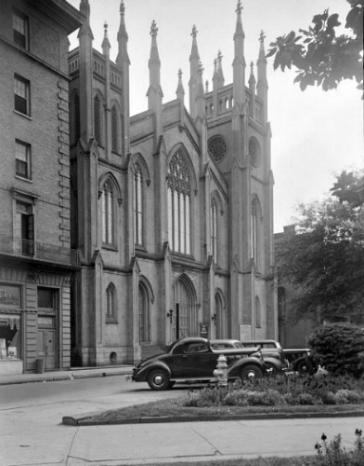
| Above and below, ca. 1938, not long before First Presbyterian Church was demolished. The building next to it survives and is still the Hotel Lafayette. |
